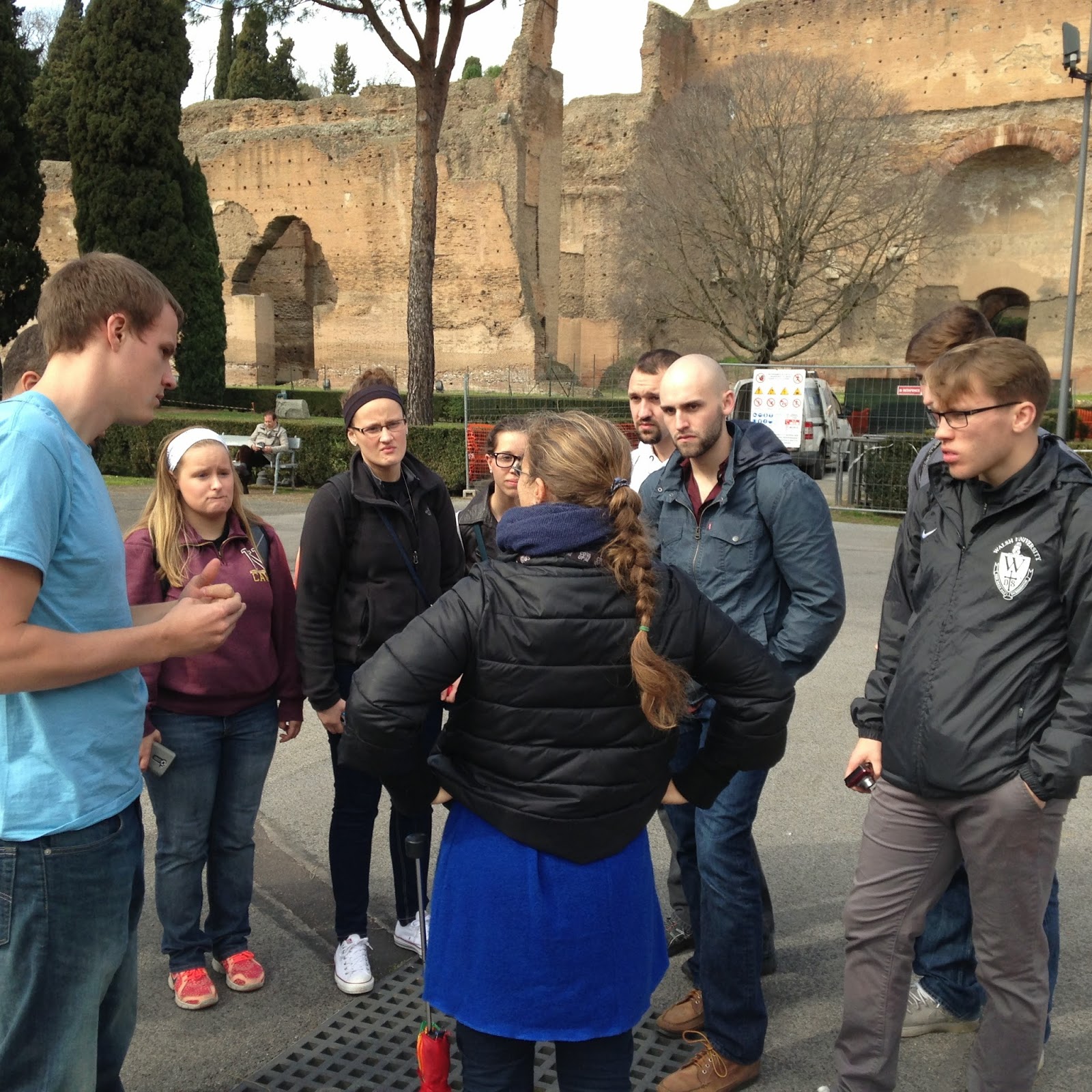Today we took the students back into Rome to have a guided tour of the Baths of Caracalla. These are the best preserved baths in Rome. Due to our appointment time, we were unable to have class on campus before leaving for Rome. So we left campus earlier and had class outside in a park before the tour actually started. The biggest problem was the traffic noise. I have held class in Rome before, but usually in the older parts where there is less traffic. The main drag in front of the Baths of Caracalla is a very busy thoroughfare. But we make due with what presents itself. Once the tour started, I tried to take some candid photos of the students in the group. I have posted many pictures of the baths themselves in previous blogs.
Once the tour of the baths was over, Mike met us for the "gelato experience". Mike delivers a short history of gelato and buys us all a gelato to taste. All of the students had already stopped for gelato somewhere in Rome during their first two days. It is necessary.
We sent the students out to continue working on their walking tours and Mike and I wandered over to a part of Caracalla I had never visited before. My first two visits to the baths were just that. I came to Caracalla, saw the baths and left. Today I decided to explore Caracalla more than just the baths.
The first place we stopped was San Gregorio Magno. San Gregorio is popular with British Catholics because it is the site where St. Augustine was sent to convert England. Currently it is the home church of the Sisters of Charity, Mother Therese's order.
One of San Gregorio's other claim to fame is that it is the tomb of Sir Edward Carne. He was Henry the VIII's envoy to the Vatican. And it was he who petitioned the pope to annul Henry VIII's marriage to Catherine of Aragon. I am assuming he is buried here because he failed at that task and was probably afraid to return to England.
One of the other famous churches on the Celian Hill in the Caracalla area of Rome is Santi Giovanni e Paolo. The original church was built in the fourth century over the tomb of two Roman martyrs named John and Paul. Not the apostles but different martyrs. Their relics or remains were preserved in a large burgundy urn under the alter.
The church is also famous for the excavation under the church which includes 2nd and 3rd century roman houses. This is also where they found the remains of the two martyrs.
As always, I am a sucker for a Romanesque bell tower and Santi Giovanni e Paolo did not disappoint.
In the first picture of the bell tower you can notice the white travertine stones used as the foundation of the tower. These were formerly part of the temple of Claudius.
Continuing up Celian Hill we passed through the arch of Dolabella.
And stopped at Santa Maria in Dominica. The church has a little boat fountain out front and contains a famous mosaic. The mosaic includes Pope Pashal the I wearing the square halo of the living at the feet of the Virgin Mary who is depicted holding a handkerchief like some lady of the court. I couldn't get a clean picture inside, just outside.
The church is next to the villa Celimontana. The arch in the picture is the entrance to the public garden/park created on the grounds of the villa. the garden also included an Egyptian obelisk.
As we finished our tour of the Celian Hill we decided to walk the short distance over to Palatine hill, Coliseum, and Forum. And proved once again that you cannot have too many pictures of the Arch of Constantine.
Saturday, February 28, 2015
Subscribe to:
Post Comments (Atom)






















No comments:
Post a Comment